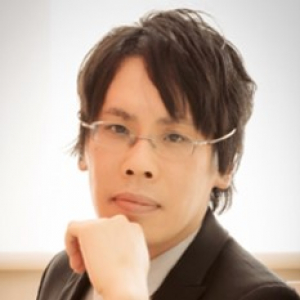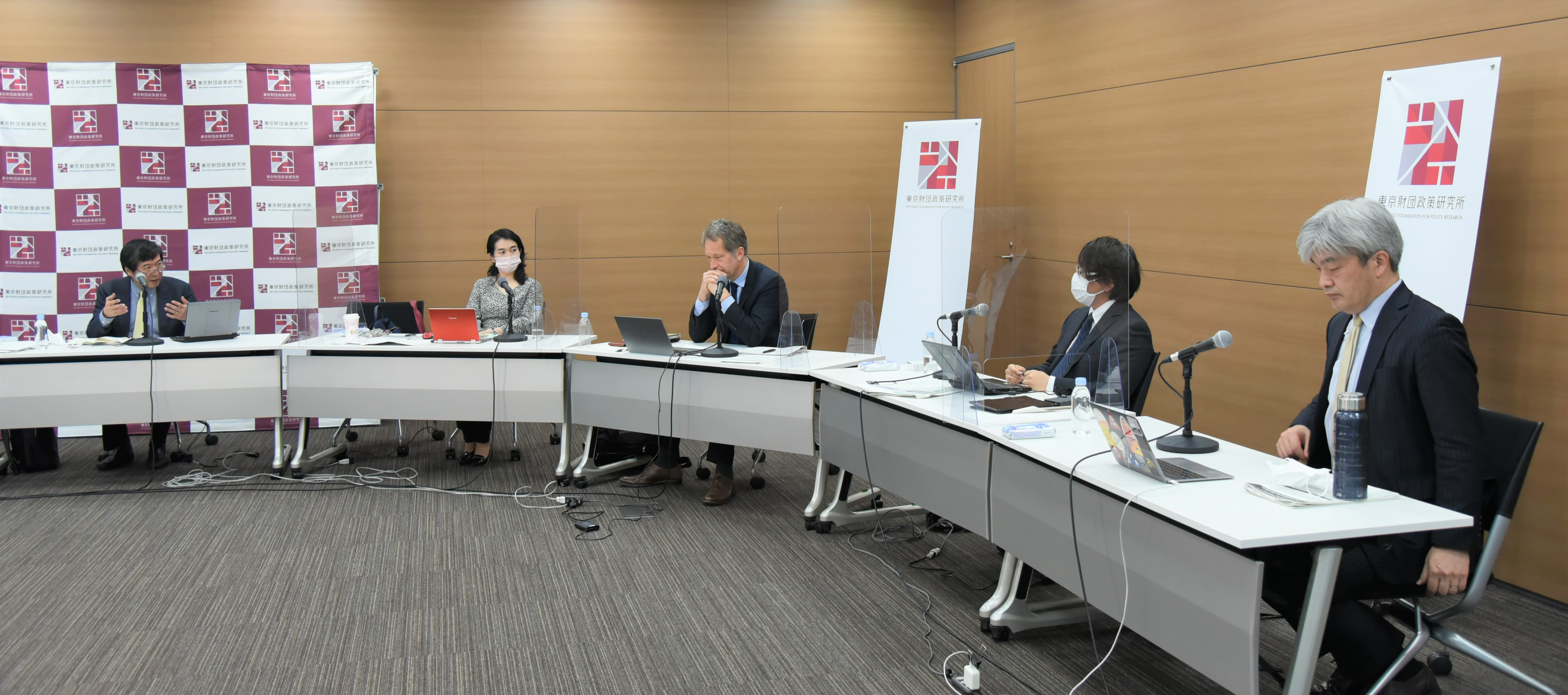
What the Emergency Repricing of Opdivo Reveals about Regulatory Risk and Systemic Fairness
July 27, 2023
R-2023-018E
When the uses for the high-priced immunotherapy drug Opdivo were expanded to the treatment of lung cancer, regulators took the unprecedented step of intervening to slash the drug’s price. The absence of such action may have created a fiscal emergency, to be sure, but the process, the author argues, raises questions about transparency and fairness and could hamper innovation.
Introduction
Emerging science and technologies are opening up a new universe in value for products and services. In the life sciences, diseases that were beyond the capacity of conventional therapies are responding to new drugs, while regenerative medicines are emerging that can restore lost functions and structures. The ability of these new and innovative technologies to meet hitherto unmet needs gives them enormous value—and eye-watering price tags. Regulation of the pharmaceuticals market through policy rather than free market competition makes the means by which the pricing of such costly products and services is controlled and adjusted critical in terms of the reception or indeed systematization of science and technology policy outcomes.
In Japan, the bulk of drugs, medical equipment, and regenerative medicines are covered under the health insurance system. The government controls the price of these products and services by setting official prices based primarily on Central Social Insurance Medical Council (Chuikyo) reviews, a system that functions as de facto price regulation distinct from pharmaceutical administration. At the same time, because insurance premiums are not enough to finance the entire national health insurance system, around 40% of the budget is drawn from taxes. As a consequence, while the Ministry of Health, Labor, and Welfare (MHLW) might be in charge of medical policy, when it comes to price control for expensive pharmaceuticals and regenerative medicines, fiscal authorities also weigh in, creating a strong element of fiscal control.
Here I overview the policy process that saw the emergency repricing of the immune-oncology drug Opdivo (nivolumab) as a case of fiscal control being exerted in relation to big-ticket products and services. I then discuss the issue of systemic fairness raised by the case, arguing that for companies, the low predictability of Japan’s systemic environment could become a regulatory risk.
Opdivo’s Emergency Repricing
On October 6, 2016, the Chuikyo’s drug pricing subcommittee approved an emergency price reduction for the PD-1 inhibitor Opdivo (manufactured by Ono Pharmaceutical), with a 50% cut being proposed at the November 16 Chuikyo general meeting and ultimately approved. The extremely exceptional nature of this step, particularly from a procedural standpoint, caused a major stir.
Up until fiscal 2020, the standard practice was to review drug prices every other year, together with the revision of medical service fees.[1] But the Opdivo price cuts were not instituted as part of that regular pricing cycle. Instead, they emerged from an unprecedented repricing process conducted under urgency and targeting only Opdivo. Following Chuikyo approval, 50% was slashed off Opdivo’s original list price in February 2017 under the system of repricing for market expansion (“huge-seller” repricing), which trims prices when annual sales vastly exceed a drug’s original estimated figure. Recalculations based on indication and dose changes saw the price reduced another 23.8% in April 2018 and then 37.5% in November the same year. This rapid erosion has taken Opdivo down to around 20% of its original list price.
The direct causes of these rapid-fire price cuts were firstly, Opdivo’s exorbitant initial price, and secondly, expectations of a blowout in health-care finances due to the dramatic rise in the addressable population accompanying Opdivo label expansions (additional indications as well as expanded dosage and administration). The official line was that the market had expanded far more than originally expected, bringing the drug within the framework for market expansion repricing, so Opdivo had been priced down accordingly.[2] The repricing criteria were (1) treatments that had gained marketing approval for additional indications between October 2015 and March 2016 and (2) treatments with forecast annual sales for fiscal 2016 that were over ¥100 billion and were at least 10 times the original expected sales. Given that the only drug that actually met these criteria was Opdivo, it was essentially a sitting duck.[3]
The Opdivo case raises three main questions. First, what was the background to and reasoning behind Opdivo being repriced out of cycle, rather than waiting for the usual biennial medical service fee revision? Second, what was the rationale behind the emergency repricing and what were the grounds for this? Third, what impact will the emergency repricing have on drug and medical device innovation in Japan? Below, we examine the policy process that led to the price change with these three issues in mind.
Policy Process
External Agenda-Setting and Framing
The substantial fiscal burden caused by the steep cost of Opdivo and the need for repricing were not highlighted during an internal MHLW process involving Chuikyo and others. The issue first came to light when it was raised by Hideo Kunito, head of the Department of Medical Oncology at the Japanese Red Cross Medical Center, at a hearing held by a Fiscal System Council subcommittee on April 4, 2016. He observed that administering 26 doses of Opdivo per year (to a patient weighing 60 kilograms) would cost ¥35 million per year. If Opdivo were to be given to just 50,000 of Japan’s estimated 130,000 lung cancer patients, the fiscal burden would reach ¥1.75 trillion, or close to 20% of total drug expenditure at the time. Kunito accordingly argued that price control was vital for ultra-expensive drugs like Opdivo.[4] Council member Takero Doi, professor of economics at Keio University, concurred, suggesting that an effective means of containing the rise of medical expenditure would be to lay down guidelines that limited the scope of drug uses. His proposal would lead to the optimal clinical use guidelines, which provide the grounds for price control by limiting drug use to a restrictively defined patient population.[5]
Stakeholder Response and Internalization
The Japan Medical Association reacted immediately to the above discussion, raising the issue of ultra-expensive drugs at its regular press conference on April 6 and noting that from the perspective of the sustainable financing of the health insurance system, Japan had no choice but to hold down pharmaceuticals spending. While basically supporting the Fiscal System Council’s line, however, it also stressed that repricing came within the purview of Chuikyo.[6]
The April 13 general meeting of Chuikyo, too, generally agreed with the Fiscal System Council’s position, suggesting that from the viewpoint of both those prescribing expensive pharmaceuticals and those paying for them, where additional indications increased a drug’s addressable population, drugs should be repriced even out-of-cycle. Consideration should be given, it said, to a rule whereby only some indications receiving regulatory approval were covered by health insurance. Chuikyo also called for a fundamental review of the drug pricing system.[7] Subsequently, discussion would proceed in line with the agenda set by the Fiscal System Council’s subcommittee—in other words, focusing on creating rules on price calculation for ultra-expensive drugs—toward emergency repricing by Chuikyo. The July 27 Chuikyo general meeting decided to consider methods of dealing with high-priced drugs other than repricing as part of the regular two-year pricing cycle, and, in terms of an immediate response, to consider taking exceptional steps in relation to Opdivo and developing price-setting that would optimize clinical use.[8] In relation to Opdivo, the focus was on how to justify emergency repricing as a procedure. The price-setting initiative picked up on the point made by Doi and others, exploring how guidelines for preventing the excessive use of costly drugs (criteria for selecting patients according to maximum clinical effectiveness, for example) could be positioned in the national health insurance system.
Chuikyo therefore followed the agenda framed by the Fiscal System Council’s subcommittee to explore grounds for an emergency repricing process and means specifically targeting Opdivo.[9] A major hurdle, however, was how to calculate the rate of reduction. In the absence of enough information corresponding to the special requirements for market expansion repricing to provide the grounds for that calculation, a mechanical calculation was problematic.
Political Intervention by the Council on Economic and Fiscal Policy
Chuikyo and its secretariat subsequently discussed formulating guidelines and the extent of price cuts, but the difficulty of legitimizing a sudden change that would overturn established customs saw discussions stall. The impasse was broken by the Council on Economic and Fiscal Policy on October 14, when private-sector members like Susumu Takahashi, Motoshige Ito, Sadayuki Sakakibara, and Takeshi Niinami emphasized the need for an Opdivo price reduction and, moreover, preempted ongoing work on the extent of the cut by commenting that a reduction of 50% would be appropriate. Niinami claimed that while 25% was apparently the maximum rate of reduction currently under consideration for Opdivo, he felt that this should be raised to 50% or more, and that it should be made possible to reprice drugs without waiting on the two-year pricing cycle.[10] In response to these observations by private-sector members, then Prime Minister Shinzo Abe instructed the relevant ministers to come up with concrete measures to address expensive drugs, while then Health, Labor, and Welfare Minister Yasuhisa Shiozaki explained that emergency repricing would be instituted outside the two-year pricing cycle where necessary to reduce the public burden.[11] As a result, the 50% reduction trajectory was locked in regardless of whether Opdivo actually met the special requirements for market expansion repricing.
The Council on Economic and Fiscal Policy’s touting of a 50% reduction therefore bore heavily on the emergency repricing of Opdivo, producing a conclusion based purely on a political decision that skipped the whole process of determining the appropriateness of a 50% price cut or of properly verifying whether Opdivo sales met calculation requirements.
Main Events in Relation to the Opdivo Emergency Repricing
|
Date |
Content |
|
April 2016 |
Issue raised by Fiscal System Council subcommittee |
|
April 2016 |
Opdivo highlighted by Chuikyo and its subcommittee on cost-effectiveness evaluation |
|
July 2016 |
Chuikyo general meeting approves optimal clinical use guidelines developed by MHLW’s Pharmaceutical Safety and Environmental Health Bureau |
|
August 2016 |
Chuikyo Special Committee on Drug Prices proposes emergency drug price reduction |
|
September 2016 |
Chuikyo Expert Committee on National Health Insurance Drug Prices holds hearings with pharmaceutical industry at which objections are voiced |
|
October 2016 |
Private-sector members of Council on Economic and Fiscal Policy demand a 50% reduction |
|
October 2016 |
Prime minister instructs health and other relevant ministers to reduce drug prices |
Discussion
Background to External Control
An examination of the policy process behind the Opdivo emergency repricing is a reminder that revisions to medical services fees and drug prices are hardly determined through an autonomous process within the MHLW. Because of its distinctive nature in terms of volume and growth rate, the social security budget attracts much stronger fiscal control than other policy areas. Political discretion, operating in tandem with the Fiscal System Council and the Council on Economic and Fiscal Policy, appears to have had great influence in the Opdivo case.
In addition, because the actual Chuikyo decision-making process has weak legal underpinnings and leans heavily on various conventions, it lacks the systemic foundations to counter political intervention. There is a surprising lack of understanding—particularly in the pharmaceutical and medical device industries—that Chuikyo does not have the authority to set prices; it is merely an advisory body whose basic function is to report when required by the health minister.[12] Consequently, drug prices ultimately have to be politically authorized. Rather than the bottom-up decision-making process usual in Japanese government offices, Chuikyo decision-making consists merely of consultations held for reporting purposes, and in some cases, political decisions can override this process. In fact, in the case of the Opdivo repricing, with the fiscal authorities framing the need for repricing right from fiscal 2016, once political intervention from the Council on Economic and Fiscal Policy and elsewhere weighed in behind the idea, the repricing decision became irrevocable.
Another problem is the lack of options available for drug price adjustment. Without a more nuanced mechanism, such as price control or repricing that can be applied to products like ultra-expensive drugs, basically the only way to adjust drug prices is across-the-board reduction at the time of the biennial price revision.
So what are the implications of the Opdivo case? Three points can be identified particularly from the perspective of systemic fairness.
Ex Post Facto Rules
Looking back, it was the MHLW and Chuikyo that approved the Opdivo label expansion to lung cancer in December 2015, at which point they must surely have been able to foresee a huge rise in the potential patient population. It would also not have been difficult to imagine this causing a surge in drug expenditure and, concomitantly, a greater burden on health-care finances. Until external fiscal authorities started weighing in, however, the MHLW appears to have been unable to apply itself to the task of making rules to control and curb pricing for Opdivo and other costly drugs. Indeed, the ministry appears to have struggled with its approach to Opdivo throughout, not just adding it to the drug list but even making systemic revisions to accommodate it—like changing the price maintenance premium (PMP) rate for Opdivo as a domestically produced breakthrough drug—and then turning around and legitimizing exceptional repricing outside the regular price-setting cycle.
At the same time, responding to external concern about the increased burden on health-care finances by making new rules ex post facto and slashing the official price seems a little extreme. From the perspective of the drugmaker, there was nothing procedurally irregular or flawed about its application for health-care insurance coverage. Formally at least, it simply made an application in line with set procedures and had its drug added to the list (and later expanded into new indications). The emergency repricing was not instituted in line with existing rules; rather, the set price became contentious after the fact, and exceptional measures were taken.
The optimal clinical use guidelines, too, were formulated retroactively to limit drug use to restrictively defined patients and thus have a strong ex post facto aspect. This hindsight-driven response highlights a startling lack of predictability in the way that the drug pricing system is operated. To the extent that the official pricing mechanism is effectively a pricing regulation distinct from pharmaceutical administration, operating the system with so little predictability seems decidedly unfair.
Vague Grounding
Drug repricing is usually based on the prevailing market price identified by a drug price survey conducted prior to the biennial price-setting exercise. When it came to reducing the price of Opdivo, however, there was no time to conduct such a survey, so the MHLW used its own estimate as the basis for calculating an annual sales figure for Opdivo—which, at ¥151.6 billion, came in above the special repricing threshold of ¥150 billion:
Expected price announced by Ono Pharmaceutical ÷ Distribution costs × Consumption tax (1.08) × Deviation rate + ¥α indication extension = ¥151.6 billion + ¥α [13]
The MHLW based its estimate on a deviation rate (price difference) of 3.45%, explaining that this was half of the average deviation rate (6.9%) for other injectable, antitumor drugs, taking into consideration the fact that Opdivo was receiving premium as a breakthrough drug. The justification for using half the average deviation rate is, however, extremely unclear, and in fact the November 16 Chuikyo general meeting saw many members questioning the rate’s legitimacy. The MHLW’s pharmaceutical management director offered no clear evidence in this regard, saying only that the ministry felt that a rigorous and conservative estimate was called for, that there was no clear grounds for halving the average deviation of 6.9%, and that the ministry had opted for half the average deviation from the perspective of producing a rigorous estimate. The figure was ultimately approved as a once-off formula, still with no rational explanation.[14]
Essentially, therefore, the 50% cut was a foregone conclusion which was justified after the fact by choosing a dubious deviation rate that conveniently took estimated annual sales over the ¥150 billion threshold.
Impact on Innovation
As is apparent from the ex post facto justification of both out-of-cycle repricing and the 50% cut, this was not a repricing exercise that followed a given procedure with some form of systemic backing. As already noted, the discussion moved forward as though the price cut was a given, raising serious issues in terms of fairness.
It was Chuikyo that approved the label expansion, so to the extent that repricing was not specified at the time of its approval, the drugmaker could reasonably assume that any subsequent price cuts would occur at the time of the biennial price revision. In that sense, the emergency repricing of Opdivo severely impacts predictability. Once an official price has been set, this is what will serve as the basis for management decisions. Given that corporate profits are directly shaped by the prices of products, repricing decisions need to be marked by a high level of predictability, fairness, and transparency.
It might be argued that the company knowingly expanded Opdivo’s indications so as to achieve immediate profit maximization. Even if that were true, a company cannot be faulted for trying to maximize its profit within the foreseeable scope of the existing system.[15] In that regard, the additional indications cannot be said to expose a flaw in corporate procedures. Moreover, unlike the current annual cycle, a biennial pricing mechanism was then standard practice, and the company had no way of foreseeing that one particular drug would be repriced out-of-cycle on an exceptional basis.
In fact, strong criticism was voiced at a hearing conducted by Chuikyo’s drug pricing subcommittee with the pharmaceutical industry on September 14, 2016. Industry representatives argued that companies operate their business on the assumption of biennial repricing, so it was unacceptable for a new rule to be introduced out of the blue, a move that could obstruct innovation.[16] In other words, even if the handling of Opdivo was exceptional, the very fact that it occurred reduced systemic predictability and eroded the motivation to engage in R&D or launch drugs in Japan. These corporate views were notably elicited after emergency repricing had already been decided, providing no opportunity (at least formally) for industry input during the discussion process. For regulators to push through changes to rules and interpretations based solely on their own reasoning, without considering the views of those directly affected by the policy change, let alone related industries and other stakeholders, threatens not only to discourage proactive regulatory compliance but also to undermine trust in the regulatory authorities along with the credibility of regulatory tools and content, raising the specter of moral hazard.
Conclusion
From a fiscal perspective, there is no question that something needed to be done urgently to control the price of Opdivo. What is not so open and shut is the directionality of that price control, the process by which the means of price control was determined, and the fairness of said process.
The actual repricing process saw the decision affecting the profits of a single company being made without properly seeking the views of the companies or the industry that would be impacted by the policy change, and without consideration and discussion in the Diet. The repricing mechanism is such that changes can be made through an administrative process without the kind of costly political coordination required in the case of, for example, legal reform, despite directly impacting the profits of particular companies. The official pricing system, in effect, grants the government power to affect corporate profit and loss, so the government must ensure that its actions maintain a high level of fairness and predictability, and in no circumstances should it do anything to control corporate activity through means that are not part of predetermined rules.
If the government wishes to encourage proactive innovation, it should maximize predictability grounded in rules developed through a transparent process. The Opdivo case contravenes that principle. To the extent that systemic fairness is not guaranteed, the regulatory environment in the Japanese market will present companies with a significant regulatory risk.
[1] Since fiscal 2021, drug prices have been revised even in years outside the medical service fee revision schedule.
[2] Under the market expansion repricing system, authorities were in a position to cut a maximum of 25% off a drug’s price if its annual sales rose to between ¥100 billion and ¥150 billion and were at least 1.5 times the original expected sales, or a maximum of 50% when sales exceeded ¥150 billion and were at least 1.3 times the original expected sales.
[3] Materials from the Council on Economic and Fiscal Policy’s Social Insurance Working Group, https://www5.cao.go.jp/keizai-shimon/kaigi/special/reform/wg1/291018/sankou1-5.pdf (Japanese only; accessed January 10, 2023).
[4] Hideo Kunito, Gan chiryo no kosuto kosatsu: Toku ni haigan chiryo ni tsuite [Observations on the Cost of Cancer Treatment, with a Particular Focus on Lung Cancer Treatment], April 4, 2016. (Material submitted to the Fiscal System Subcommittee, Fiscal System Council). The budget examiner serving as the council secretariat also noted that the purpose of inviting Kunito to the hearing was to have him provide one perspective for policy discussion on what reforms to institute so as to address rising drug costs and ensure the sustainability of the health insurance system.
[5] Fiscal System Subcommittee, Fiscal System Council, Gijiroku [Minutes], April 4, 2016, https://warp.ndl.go.jp/info:ndljp/pid/10319762/www.mof.go.jp/about_mof/councils/fiscal_system_council/sub-of_fiscal_system/proceedings/proceedings/zaiseia280404.html (accessed January 30, 2023).
[6] Nichi-i Online, May 5 Press Release, https://www.med.or.jp/nichiionline/article/004339.html (accessed January 30, 2023).
[7] Minutes of the 330th Central Social Insurance Medical Council General Meeting, https://www.mhlw.go.jp/stf/shingi2/0000125926.html (accessed January 30, 2023).
[8] 334th Central Social Insurance Medical Council General Meeting, Kogaku na yakuzai e no taio ni tsuite (an) [Proposed response to ultra-expensive drugs], http://www.mhlw.go.jp/stf/shingi2/0000130983.htm (accessed January 30, 2023).
[9] The April 27 meeting of the Chuikyo cost-effectiveness subcommittee selected Opdivo for the trial introduction of a cost-effectiveness evaluation on the grounds that Opdivo had the highest operating profit premium.
[10] Cabinet Office, Keizai Zaisei Shimon Kaigi giji shushi [Summary of Proceedings of the Council on Economic and Fiscal Policy], October 14, 2016, http://www5.cao.go.jp/keizai-shimon/kaigi/minutes/2016/1014/shidai.pdf (accessed January 30, 2023). Takahashi noted that Opdivo’s label expansion to lung cancer had increased patient numbers to 32 times the level envisaged when the drug was first added to the national health insurance list, necessitating a decisive price cut as well as clarification of rules enabling out-of-cycle repricing in line with label expansion, etc. Ito described Japan’s price-setting as lacking flexibility and agility. Sakakibara called for an early and drastic price reduction for Opdivo and for further correction as necessary at the time of the 2018 price revisions. A rigorous review was also needed, he said, of rules on out-of-cycle repricing in response to the addition of indications as in the current case.
[11] Yomiuri Shimbun online edition (October 15, 2016), https://yomidr.yomiuri.co.jp/article/20161015-OYTET50004/.
[12] The minister of health, labor, and welfare is invested with the authority to set prices under Article 76 of the Health Insurance Act, and must, pursuant to Article 82 of the same, consult with Chuikyo when revising those prices.
[13] Answers News, “Opujiibo konkyo toboshii ‘50% hikisage’: 17-nen 2-gatsu ni kinkyu yakka kaitei” [Shaky Grounds for 50% Opdivo Price Cut: Emergency Repricing in February 2017], http://answers.ten-navi.com/pharmanews/8141/.
[14] Minutes of the 339th Central Social Insurance Medical Council General Meeting, https://www.mhlw.go.jp/stf/shingi2/0000153024.html (accessed January 30, 2023). One member also pointed out that using one-third of the deviation rate would have produced the figure of ¥149.7 billion, which would only justify a 25% cut.
[15] In this regard, the case is similar to the ruling that the decision of the Ministry of Internal Affairs and Communications to exclude the city of Izumisano from the revised hometown tax donation system (2020 [Gyo-Hi] 68 [Third Petty Bench, June 30, 2020]: Case Seeking the Revocation of Nondesignation).
[16] In terms of views expressed by industry associations, Masayo Tada (Sumitomo Dainippon Pharma president and CEO; chair of the Federation of Pharmaceutical Manufacturers’ Associations of Japan) observed that companies operate their business on the assumption of biennial repricing, and the industry cannot be party to discussion where out-of-cycle repricing is already a foregone conclusion. He also said that it was entirely unacceptable to suddenly introduce and apply a new rule. Ichiro Umeda (Pfizer Japan president; deputy chair, Pharmaceutical Research and Manufacturers of America Japan-Based Executive Committee) expressed concern that the decision could not only obstruct innovation but also create unnecessary confusion on the medical front lines and at the distribution level, stressing that a system reducing the price of breakthrough drugs should not be introduced out-of-cycle. Carsten Brunn (president of Pharmaceuticals for the Americas Region, Bayer; chairman, European Federation of Pharmaceutical Industries and Associations Japan) argued that the current biennial repricing system was functioning appropriately. Chuikyo Drug Pricing Subcommittee, Minutes of the 118th Meeting (September 14, 2016), https://www.mhlw.go.jp/stf/shingi2/0000147619.html (accessed January 30, 2023).
















